- Beranda
- Komunitas
- Entertainment
- The Lounge
Microsoft Office Revolution!
TS
newmessage
Microsoft Office Revolution!

English time!
Spoiler for "":
When it comes to office automation, the first thing that comes to mind is Microsoft Office. One cannot imagine a Windows-based computer without a local copy of Word, Excel and PowerPoint. The future may hold the key to cloud based apps, but as of now, a pretty large chunk of Microsoft users is still dependent on local installations. For the past few years, an exception being the statement released on Jan 24-25 2013, the office automation software bundle from Microsoft generated more revenue compared to its Windows range of operating systems.
The evolution of office automation is tied to the evolution of Microsoft Office as the latter remained and stays ahead in offering the latest features that enhance and support the functions required by the ever-changing needs of business houses worldwide.
Microsoft Word For MS-DOS – Pre Windows Era
Evolution & History Of MS Office: From Keyboard To Touch Interface
Year 1990 – Microsoft Office For Windows (Office 1.0)
A combination of Word 1.1, Excel 2.0 and PowerPoint 2.0 released in November 1990
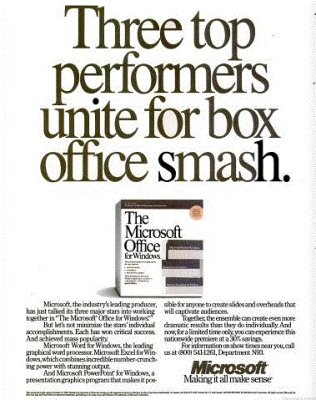
The above image is an advert from Microsoft for the first ever Office suite (Office 1.0 for Windows 2.0) in “Electronics”.
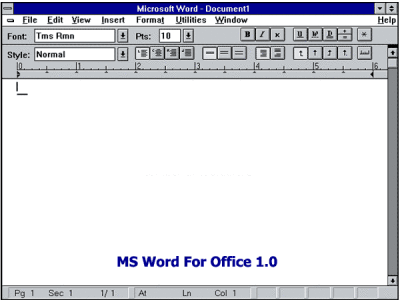
Year 1991 – MS Office 1.5 – Improved Excel (with Word 1.1 & PowerPoint 2.0)
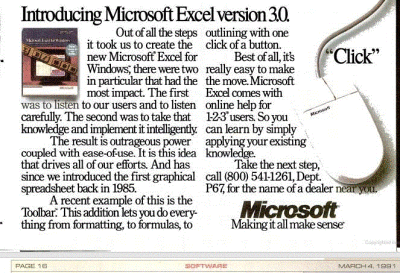
Year 1992 – MS Office 3.0 For Windows (Office 92 on CD-ROM)
Contains – Word 2.0; Excel 4.0A and PowerPoint 4.0. Do note that the version numbers are not consistent; they were made consistent only after Office 95 that we’ll check out below.
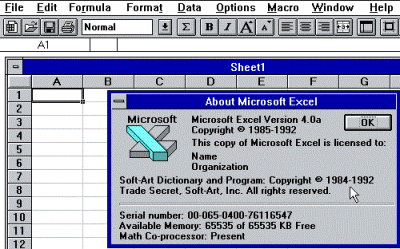
IMPORTANT: For versions and sub versions prior to Office 92, the distribution packages were either sequential storage devices (tapes) or a set of floppies (Setup would be like: Insert Disk 2 to continue etc.!)
Year 1994 – Office 4.0 For Windows
There was one small upgrade for Excel between Office 3.0 and Office 4.0 and the same was continued in Office 4.0.
Instead of Excel 4.0a, it was now Excel 4.0. PowerPoint version was same – 3.0. The major overhaul was MS Word which now had a very rich interface focusing on formatting.
Thus, Office 4.0 composed of following: Word 6.0, Excel 4.0, and PowerPoint 3.0.
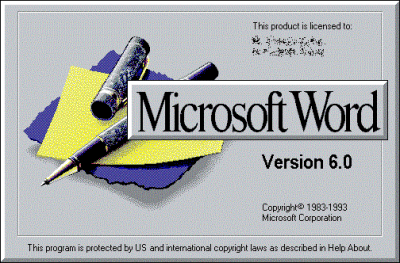
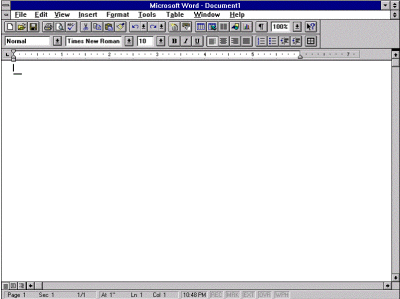
Year 1995 – Office 7.5 or Office 95
Naming convention was changed to match the version numbers of each application software in Office suite! Thus, it was Word 95, Excel 95 and Presentation 95.
Note that each version of MS Office also brought in other software such as Publisher etc. For this picture article, we will stick to the main three components as including others as well will confuse some. I will later talk about the other software in a separate picture roll.
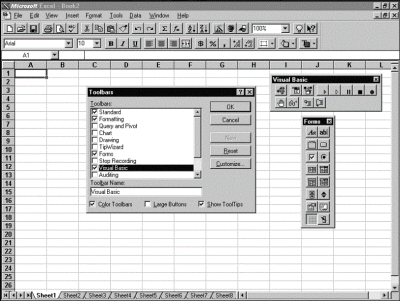
IMPORTANT: This version was not backward compatible and would work only on Windows 95 and later operating systems. You might get one from the Internet if curious but make sure it is not a fake or malware.
Year 1996 Fall – Office 97: Introduction Of Office Assistant!
Mid 1999 – Office 2000 (Better User Experience)
Mid 2001: Office XP
Fall Of Year 2003 – Office 2003: The Most Used MS Office Version Ever
Office 2007 introduced the Ribbon Interface
Office 2010 introduced Office Web Apps
Office 2013 comes with cloud integration
The evolution of office automation is tied to the evolution of Microsoft Office as the latter remained and stays ahead in offering the latest features that enhance and support the functions required by the ever-changing needs of business houses worldwide.
Spoiler for MSO Evolution":
Microsoft Word For MS-DOS – Pre Windows Era
Spoiler for "MS Word":
The history of MS Office starts officially from November 19 1990 when Office for Windows (also called MS Office 1.0) came out for use with Windows 2.0. Prior to Office 1.0, the basic elements of the package were still available as separate programs but for MS-DOS. The primary input devices for pre Windows Microsoft Word were keyboards. Mouse was a luxury not used by many. Though they have many good features, formatting and printing requires good expertise. You can still download one of the DOS based Word from the Internet - but I won’t recommend any site as I don’t know if they would be clean.
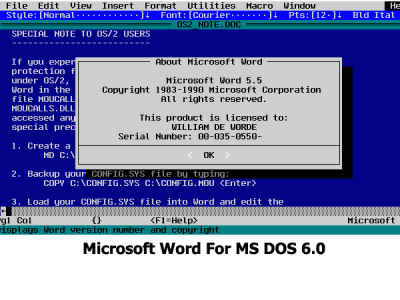

Evolution & History Of MS Office: From Keyboard To Touch Interface
Spoiler for "":
We will take you on a pictorial tour of the different versions of Microsoft Office that debuted as an add-on for Windows 2.0 and went on to change the face of office automation across the business houses on the planet. It shifted users from the then famous WordPerfect to MS Word and killed the former’s market. A major factor for the huge success of MS Office was and is the keyboard shortcut system as opposed to the formatting system of WordPerfect that required users to type in special codes.
Year 1990 – Microsoft Office For Windows (Office 1.0)
Spoiler for "Year 1990 – Microsoft Office For Windows (Office 1.0)":
A combination of Word 1.1, Excel 2.0 and PowerPoint 2.0 released in November 1990

The above image is an advert from Microsoft for the first ever Office suite (Office 1.0 for Windows 2.0) in “Electronics”.

Year 1991 – MS Office 1.5 – Improved Excel (with Word 1.1 & PowerPoint 2.0)
Spoiler for "Year 1991 – MS Office 1.5 – Improved Excel (with Word 1.1 & PowerPoint 2.0)":

Year 1992 – MS Office 3.0 For Windows (Office 92 on CD-ROM)
Spoiler for "Year 1992 – MS Office 3.0 For Windows (Office 92 on CD-ROM)":
Contains – Word 2.0; Excel 4.0A and PowerPoint 4.0. Do note that the version numbers are not consistent; they were made consistent only after Office 95 that we’ll check out below.

IMPORTANT: For versions and sub versions prior to Office 92, the distribution packages were either sequential storage devices (tapes) or a set of floppies (Setup would be like: Insert Disk 2 to continue etc.!)
Year 1994 – Office 4.0 For Windows
Spoiler for "Year 1994 – Office 4.0 For Windows":
There was one small upgrade for Excel between Office 3.0 and Office 4.0 and the same was continued in Office 4.0.
Instead of Excel 4.0a, it was now Excel 4.0. PowerPoint version was same – 3.0. The major overhaul was MS Word which now had a very rich interface focusing on formatting.
Thus, Office 4.0 composed of following: Word 6.0, Excel 4.0, and PowerPoint 3.0.


Year 1995 – Office 7.5 or Office 95
Spoiler for "Year 1995 – Office 7.5 or Office 95":
Naming convention was changed to match the version numbers of each application software in Office suite! Thus, it was Word 95, Excel 95 and Presentation 95.
Note that each version of MS Office also brought in other software such as Publisher etc. For this picture article, we will stick to the main three components as including others as well will confuse some. I will later talk about the other software in a separate picture roll.

IMPORTANT: This version was not backward compatible and would work only on Windows 95 and later operating systems. You might get one from the Internet if curious but make sure it is not a fake or malware.
Year 1996 Fall – Office 97: Introduction Of Office Assistant!
Spoiler for "Year 1996 Fall – Office 97: Introduction Of Office Assistant!":
LEGENDARY OFFICE SUITE!
I'am sure many of you must have loved that dancing clip, Clippy, whenever you pressed F1 for Help
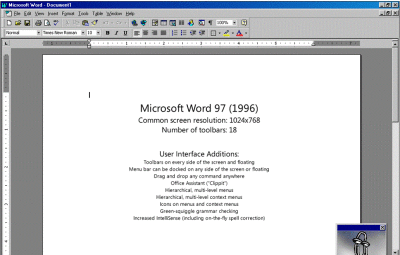
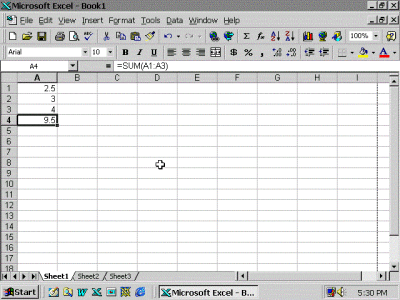
Interface of Excel 97: Notice Word & Excel Icons In Windows Quick Launch Bar
I'am sure many of you must have loved that dancing clip, Clippy, whenever you pressed F1 for Help


Interface of Excel 97: Notice Word & Excel Icons In Windows Quick Launch Bar
Mid 1999 – Office 2000 (Better User Experience)
Spoiler for "Mid 1999 – Office 2000 (Better User Experience)":
Among the many updates to previous versions were smoother user elements and improved security
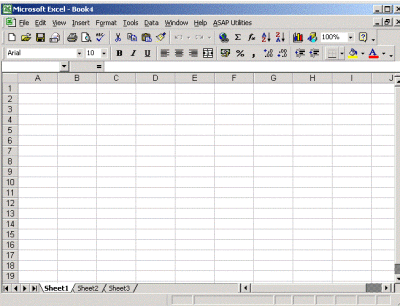
Notice The Smoother Interface here.

Notice The Smoother Interface here.
Mid 2001: Office XP
Spoiler for "Mid 2001: Office XP":
With XP, Microsoft provided almost all features to users working under restricted mode on corporate networks. Notice the shine on the Window title that is inherited from the basic elements on Windows XP that continued to rule for almost a decade.
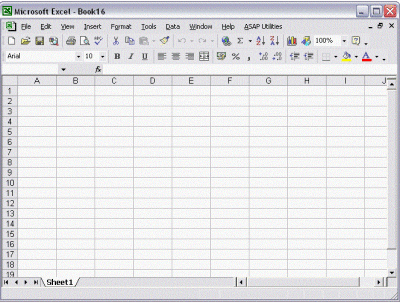

Fall Of Year 2003 – Office 2003: The Most Used MS Office Version Ever
Spoiler for "Fall Of Year 2003 – Office 2003: The Most Used MS Office Version Ever":
In case of MS Office however, the most used version is version 2003 with plenty of functionality and security features. Blended with Windows XP completely and presented icons and toolbars with the same look as the operating system. Other than the looks, the rich feature arranged neatly under different menu tabs made it users’ choice to years until they were forced to upgrade to Office 2007 and Office 2010.
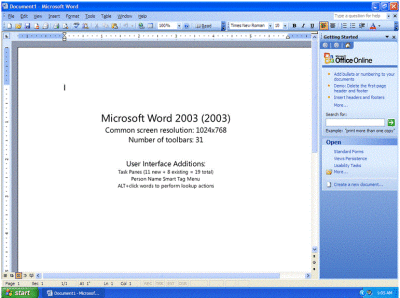
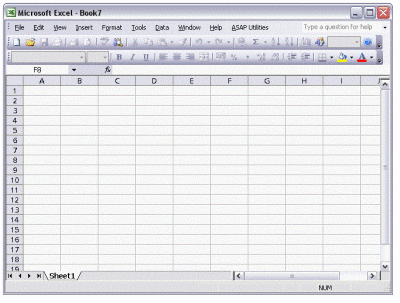


Office 2007 introduced the Ribbon Interface
Spoiler for "Office 2007 introduced the Ribbon Interface":
Office 2007 introduced the ribbon interface and helped you produce professional-looking documents by providing a comprehensive set of tools for creating and formatting your document in the new Microsoft Office Fluent user interface.
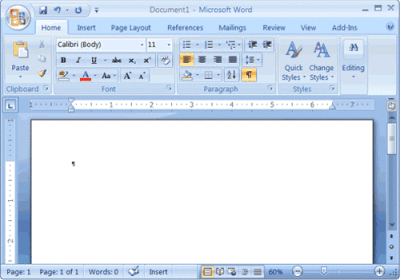

Office 2010 introduced Office Web Apps
Spoiler for "Office 2010 introduced Office Web Apps":
Microsoft Office 2010 let people & employees keep in touch and working effectively no matter where they were. They could use the same applications from their PCs, from a smartphone, or from a Web browser.
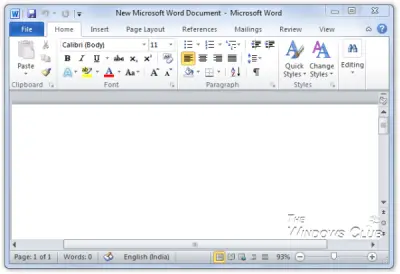

Office 2013 comes with cloud integration
Spoiler for "Office 2010 introduced Office Web Apps":
The Evolution Of MS Office continues with Office 2013 and Office 365 and makes use of cloud computing and takes it to the next level, while introducing Touch.
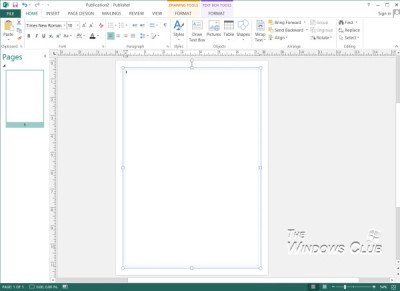

Spoiler for "":
Further detail about MS Office 2013 can be found in here

dan

Thanks for dropping by

Diubah oleh newmessage 30-01-2013 12:10
0
2.7K
Kutip
11
Balasan
Komentar yang asik ya
Urutan
Terbaru
Terlama
Komentar yang asik ya
Komunitas Pilihan